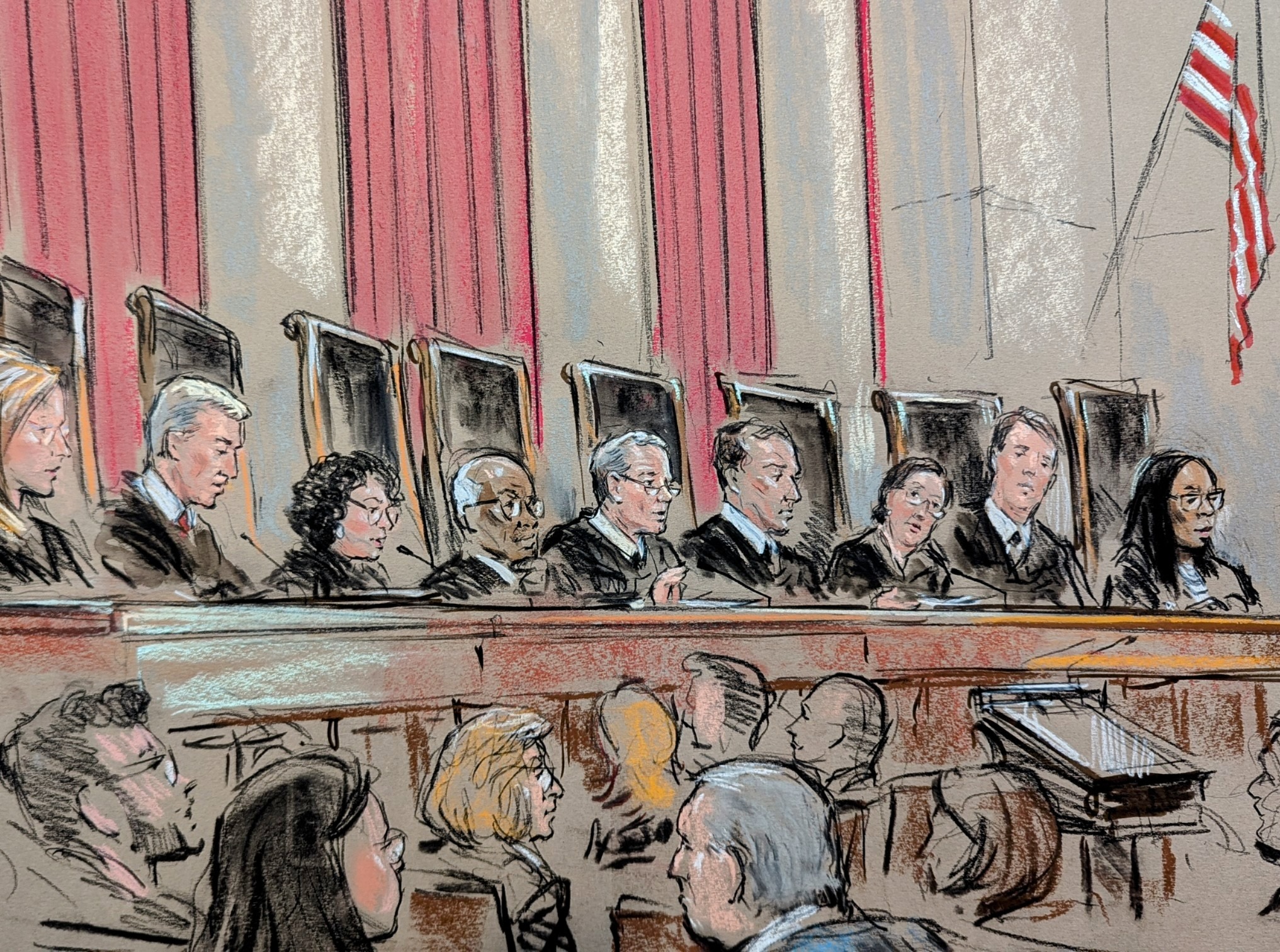Where the Supreme Court’s two most conservative justices part ways


If you want to go fast, go alone. If you want a more conservative court, go together.
That twist on the popular proverb, or something like it, could be used to describe the relationship between Justices Clarence Thomas and Samuel Alito, the Supreme Court’s most closely aligned — and most ideologically conservative — pair.
Specifically, according to SCOTUSblog’s Stat Pack, Thomas and Alito agreed in 97% of all cases resolved with opinions from the court and in 100% of the closely divided (6-3 or 5-4) ones in the 2024-25 term.
While Justices Elena Kagan and Ketanji Brown Jackson also agreed in 100% of closely divided cases, as SCOTUSblog previously reported, no pair of justices was in agreement overall as often as Thomas and Alito. They voted differently in just two cases; the next closest duo in terms of overall alignment (Jackson and Justice Sonia Sotomayor) disagreed in four.
Because Thomas and Alito were each in the majority in one of the two cases that split them, they were equally likely to be in the majority on the whole. Each voted with the majority in 78% of all the cases resolved with opinions from the court, 62% of non-unanimous cases, and 50% of closely divided ones.
Additionally, in the 13 cases in which both Thomas and Alito were in dissent, there was almost always an overlap between the dissenting opinions they wrote or signed onto.
So what were the two cases in which Thomas and Alito were on opposite sides last term? They both had to do with criminal proceedings.
In Andrew v. White, the court considered whether a death-row inmate, Brenda Evers Andrew, could challenge her conviction for murder and the resulting death sentence based on how prosecutors deployed her sexual history during her trial. The Supreme Court, in an unsigned opinion and without hearing oral arguments, sent Andrew’s case back to the U.S. Court of Appeals for the 10th Circuit for that court to consider whether prosecutors had violated her due process rights.
Alito agreed with the court’s decision to send the case back to the 10th Circuit for another look. Under the Supreme Court’s cases, he said, the introduction of “irrelevant and highly prejudicial evidence” that “overwhelm[s]” other, “properly admitted evidence” can violate a defendant’s due process rights. But he did not weigh in on “whether that very high standard” had been satisfied in Andrew’s case.
Thomas wrote a dissenting opinion, joined by Justice Neil Gorsuch. Thomas argued that the majority had mischaracterized how prosecutors used the sex-related evidence at Andrew’s trial and misapplied legal precedent when assessing the 10th Circuit’s work.
In the second case, Esteras v. United States, the justices addressed what sentencing factors should be used when courts consider whether to revoke a term of supervised release, leading to a defendant’s reimprisonment. Thomas joined the 7-2 majority opinion from Justice Amy Coney Barrett, which said that judges must base their decisions on the sentencing factors listed in supervised release law and not consider what other sentencing laws say about retribution.
Alito, joined by Gorsuch, dissented, arguing that the court’s opinion had no basis in the text and structure of the law. “Veteran trial judges often complain that their appellate colleagues live in a world of airy abstractions and do not give enough thought to the practical effects of their holdings. Today’s decision is likely to earn the rank of Exhibit A in the trial bench’s catalog of appellate otherworldliness,” he wrote, lines that earned him a shoutout in SCOTUSblog’s list of the most intense dissents of the 2024-25 term.
What can we take away from this?
Although the justices each discussed the societal effects of the court’s ruling in their respective dissents, only Alito seemed to let a concern about those effects drive his analysis. As noted, much of Alito’s dissent in Esteras was spent exploring how the court’s opinion “defie[d] common sense” by making trial judges “engage in mind-bending exercises.” In Andrew v. White, Thomas raised a concern about creating confusion in the lower courts, but spent most of his dissent discussing other aspects of the court’s decision. Thus, in the rare case where they disagreed, Alito was more focused on the practical outcome of the court’s decision than Thomas.
Also of note is that Thomas and Alito each voted with Gorsuch in the two cases in which they did not vote with each other. That might not surprise you if you’ve heard the three justices described as the conservative counterpart to the court’s three Democratic appointees. During the 2024-25 term, there were 10 6-3 decisions. Thomas, Alito, and Gorsuch were in the minority together in four of them, while Kagan, Sotomayor, and Jackson dissented together in the other six.
However, the alignment between the three conservative justices is not the same as the alignment between the three liberal ones. While Kagan, Sotomayor, and Jackson each voted with their fellow liberal justices more often than with any other justices, Thomas and Alito agreed with Barrett and Justice Brett Kavanaugh more often than they agreed with Gorsuch in all cases decided with opinions from the court.
Perhaps the biggest difference between Thomas and Alito is that Thomas is a more prolific writer. He penned 29 opinions during the 2024-25 term (seven for the majority, 13 in concurrence, and nine in dissent), while Alito wrote 17 (six, five, and six, respectively.)
Moving forward, the most pressing question may not be whether Thomas and Alito will continue to stick together. Given their alignment this term, that seems quite likely. Rather, it’s when either of the two, or both, will retire from the court.
Posted in Court Analysis, Uncategorized
Cases: Andrew v. White, Esteras v. United States